10 Wild Animals in Lesotho [Wildlife in Lesotho]
Want to know more about the wildlife in Lesotho?
Discover 10 wild animals in Lesotho in this post, as well as interesting facts about them. 🇱🇸
Learn All About Basotho Animals
Ready to learn all about Basotho animals?
I’ve always been fascinated by animals and by how they can be so different from one country to another. In this guide, we’ll focus on the many animals Lesotho has on the land, in the sky, and underwater.
I’ve split the guide into 4 categories:
- Native animals from Lesotho
- Endangered animals of Lesotho
- What is the national animal of Lesotho?
- How many animals native to Lesotho?
Let’s dive in right away with our first category!
Native Animals from Lesotho
Lesotho is a small African country located in the southern part of the continent. It is one of the only three enclaved countries in the world with San Marino and Vatican City (as it is entirely surrounded by South Africa), and it used to be a British colony. Obviously, it is only bordered by South Africa, and its capital and largest city is Maseru, which counts more than 330,000 inhabitants.
An interesting part of the country that I wanted to tackle is its wildlife. In light of that, I have listed the best of it, and I hope you will love learning what animals live in Lesotho.
Here’s the Lesotho animals list.
1. African leopard
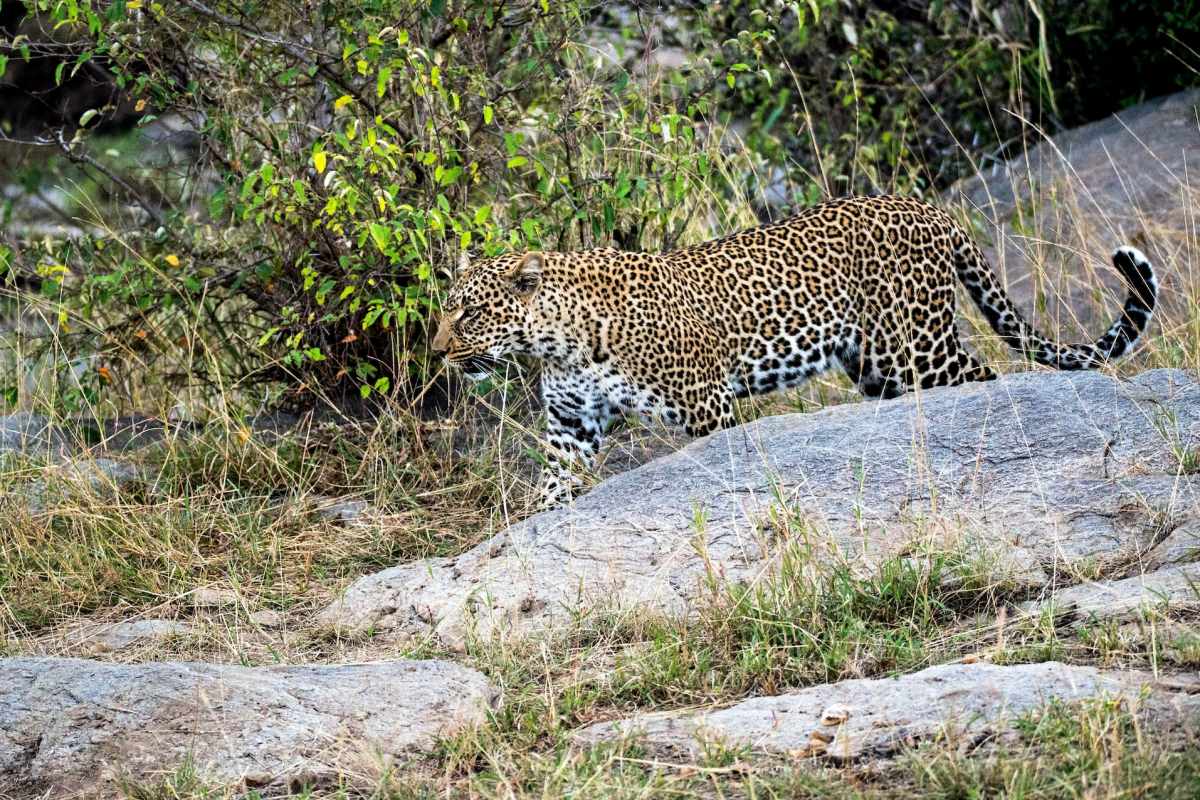
- Name: African leopard
- Scientific name: Panthera pardus pardus
- Conservation status:
Definitely one of the most well-known large cats in the world, the leopard is also present in Africa in the form of the African leopard. It can be found in multitudes of countries throughout sub-Saharan Africa, but its range has been fragmented over the past centuries because of habitat conversion.
Depending on habitat and location, this leopard’s coat greatly varies from pale yellow to black; it is then known as a black panther.
2. Southeast African cheetah
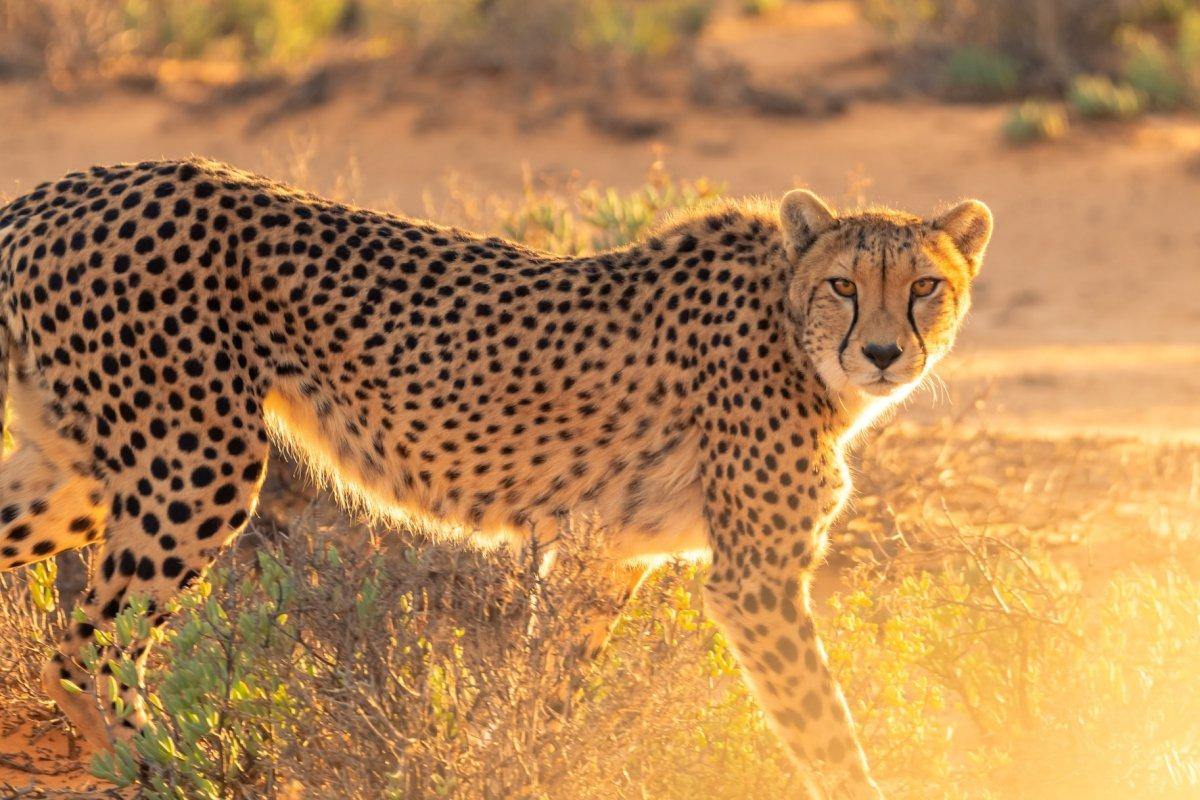
- Name: Southeast African cheetah
- Scientific name: Acinonyx jubatus jubatus
- Conservation status:
The Southeast African cheetah is a subspecies of cheetah native to southern and eastern Africa. It inhabits deserts, lowland areas, savannas, farmlands, and grasslands, depending on the country.
The fastest land animal on the planet is very athletic and feeds on medium-sized and large antelopes, as well as fast, small animals. Its competitors are spotted hyenas which can steal its prey, as well as lions which can kill them.
3. Chacma baboon
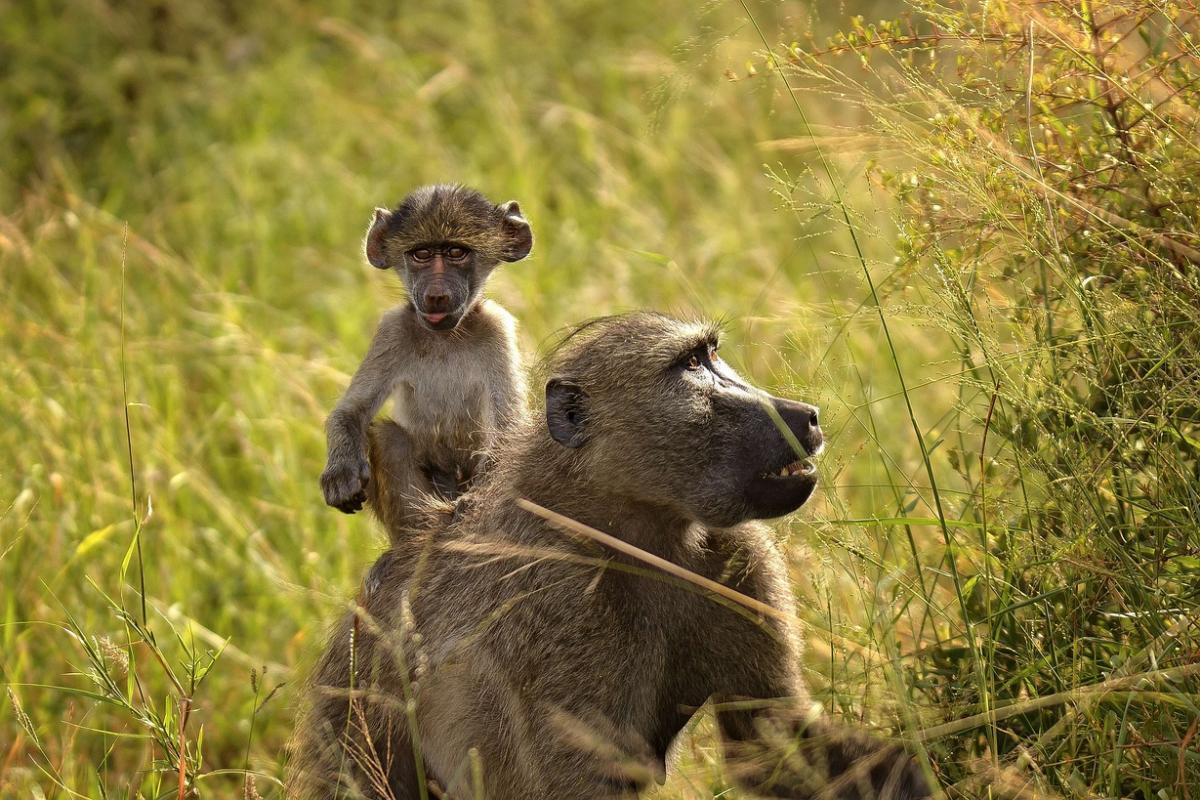
- Name: Chacma baboon
- Scientific name: Papio ursinus
- Conservation status:
The chacma baboon, also known as the Cape baboon, is a species of Old World monkey, and one of the largest of all monkeys. It can mostly be found in southern Africa and has unique social behaviors, such as friendship pairings, adoption of young by females, and collective foraging.
This baboon suffers from trapping, accidental killings, and hunting, and is becoming closer and closer to humans because of population pressure, but is overall not threatened.
4. Cape porcupine
- Name: Cape porcupine
- Scientific name: Hystrix africaeaustralis
- Conservation status:
The Cape porcupine, also known as the South African porcupine, is a species of Old World porcupine native to central and southern Africa. It is the largest rodent in all of Africa, as well as the world’s largest porcupine.
This species inhabits a wide range of habitats, from sea level to 2,000 m / 6,600 ft high. It mostly feeds on plant material, from fruits and roots to bulbs and bark, but was already spotted gnawing on bones and carrion.
5. Burchell’s zebra
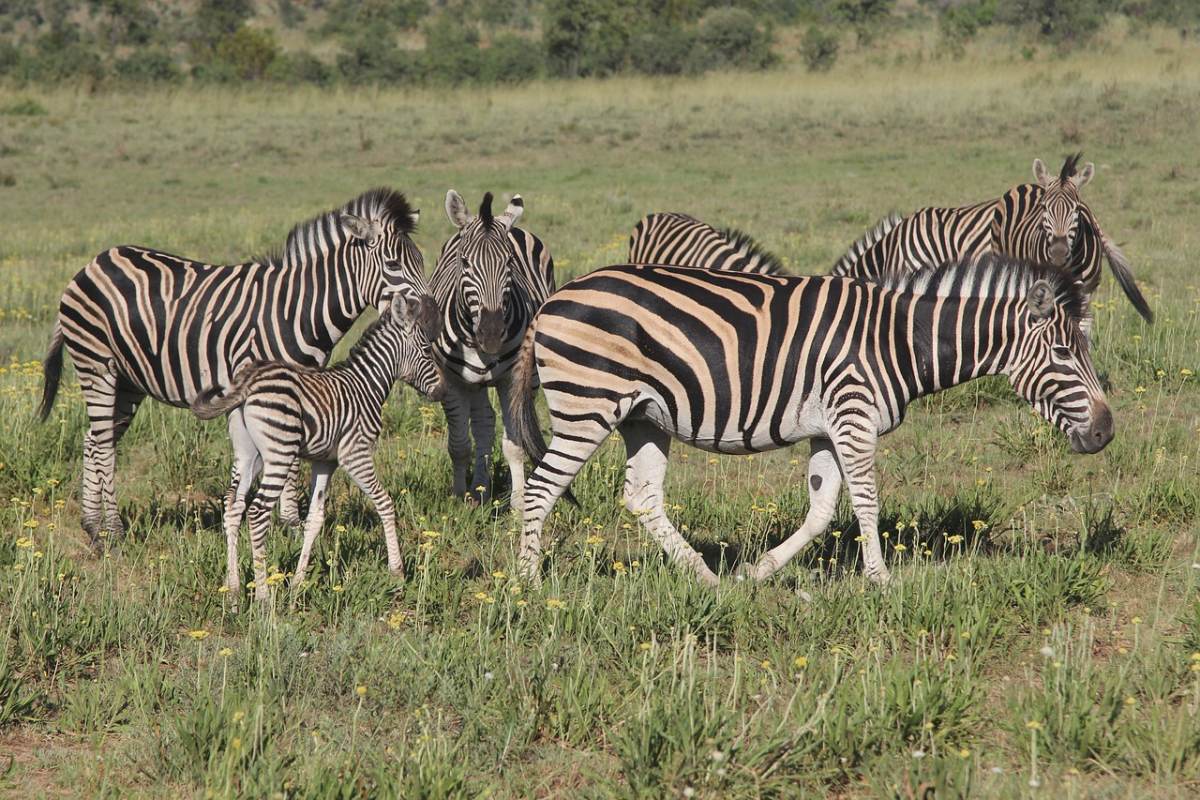
- Name: Burchell’s zebra
- Scientific name: Equus quagga burchellii
- Conservation status:
Burchell’s zebra, also known as the bontequagga, the Zululand zebra, or the Damaraland zebra, is a subspecies of the plains zebra, native to the southernmost parts of Africa. It was named after the British explorer William John Burchell and is the only subspecies of zebra that can legally be farmed for human consumption.
Similarly to other plains zebras, Burchell’s zebras live in small family groups, either bachelor groups or harems.
6. Mountain reedbuck
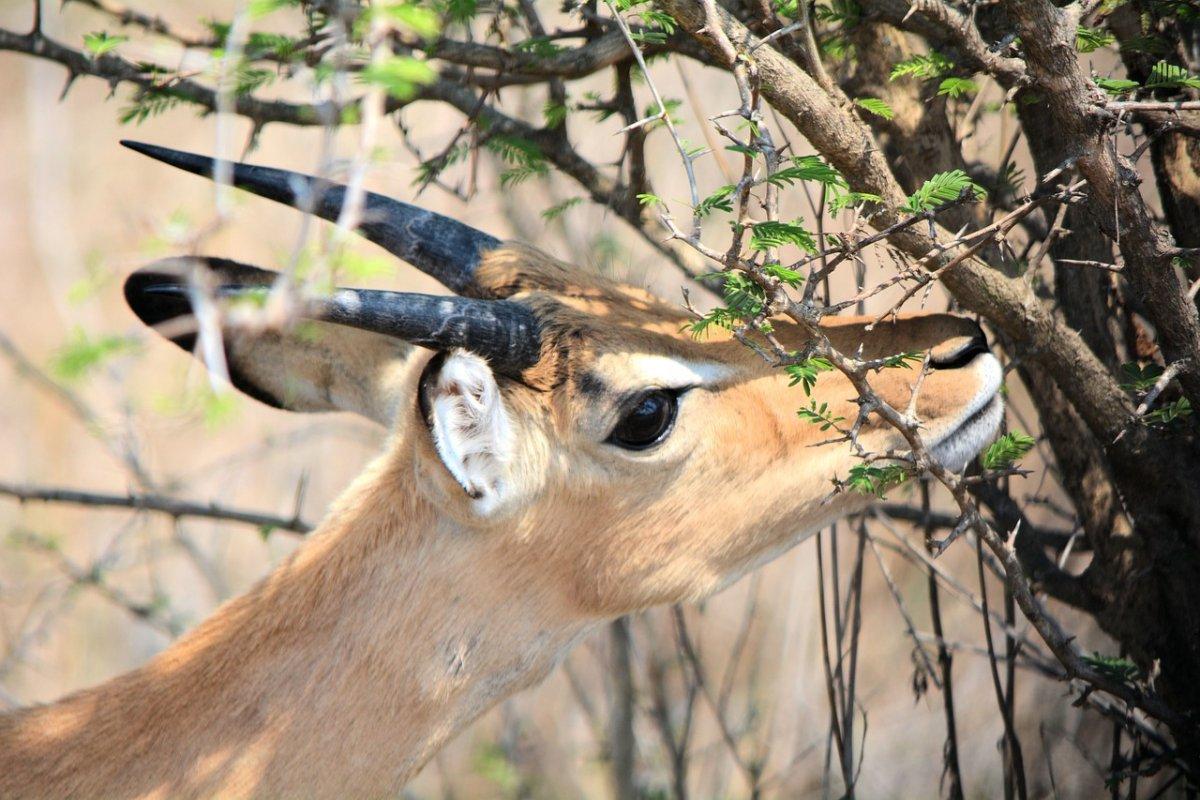
- Name: Mountain reedbuck
- Scientific name: Redunca fulvorufula
- Conservation status:
The mountain reedbuck is a species of antelope that inhabits mountainous areas of sub-Saharan Africa. Only 3 populations remain in somewhat small areas of the continent: in the Eastern Cape Province of South Africa to Lesotho and Botswana, in Kenya, Uganda, Tanzania, Sudan, and Ethiopia, and in Cameroon.
There are about 36,000 individuals in the wild, and they are threatened by hunting pressure and human encroachment on their habitat.
7. Brown hyena
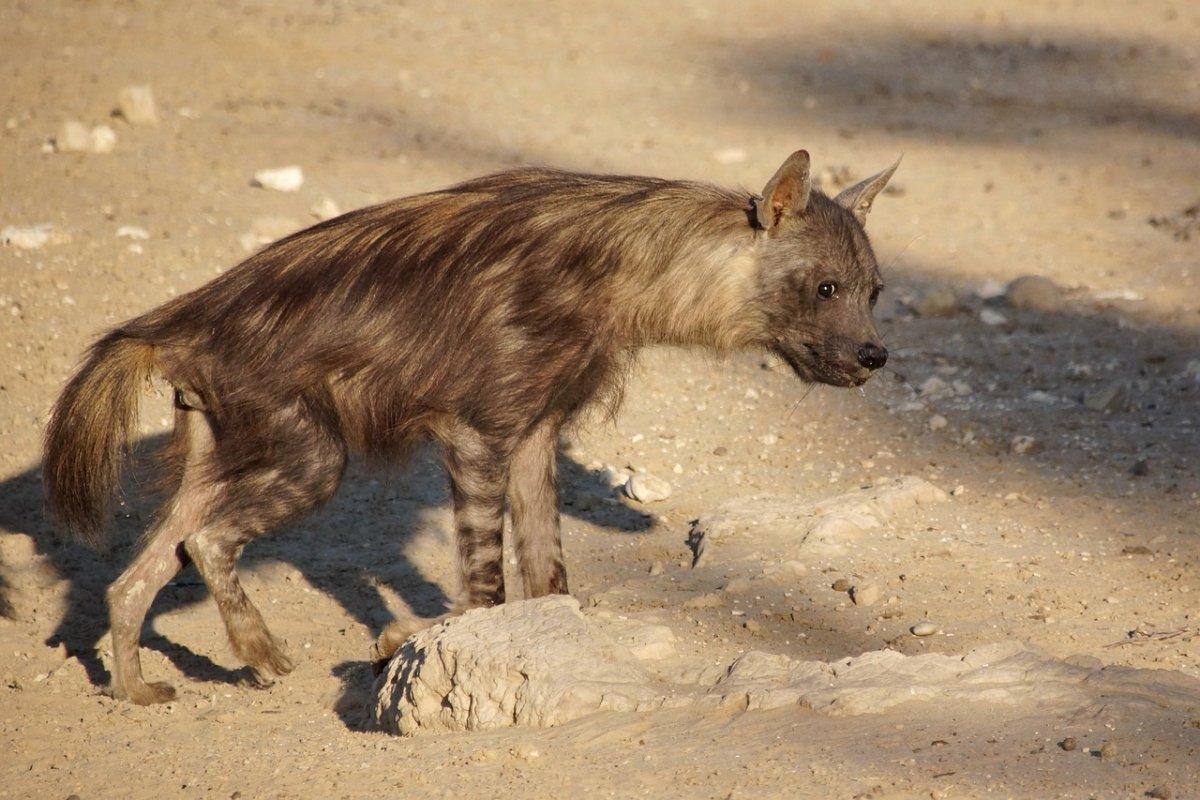
- Name: Brown hyena
- Scientific name: Parahyaena brunnea
- Conservation status:
The brown hyena, also known as the strandwolf, is a very unique species of hyena that can be found in Lesotho, South Africa, Mozambique, Zimbabwe, Botswana, and Namibia. While you may have heard of its relative, the spotted hyena (widely known as the laughing hyena) and the striped hyena, the brown hyena is much rarer.
There are only 4,000 to 10,000 brown hyenas in the wild, and they are threatened by human persecution and poaching for use in traditional medicine and rituals.
8. Serval
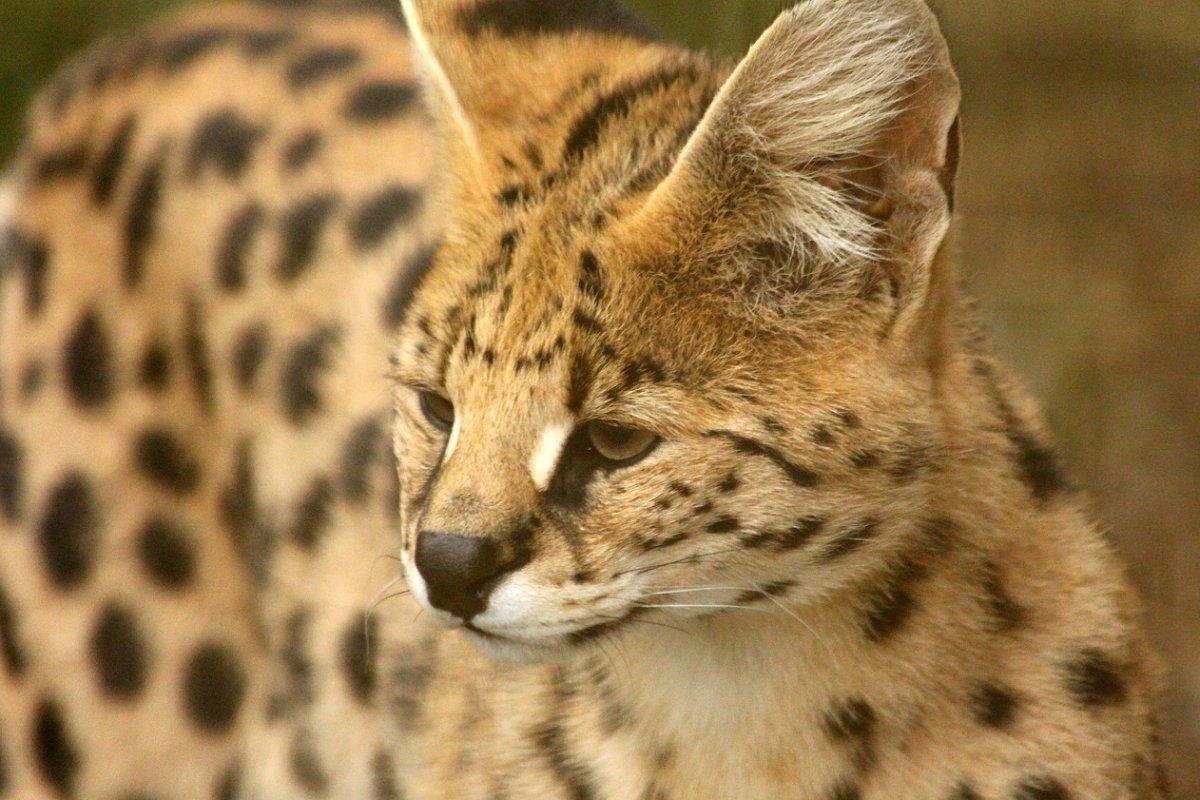
- Name: Serval
- Scientific name: Leptailurus serval
- Conservation status:
The serval is a medium-sized species of wild cat native to much of sub-Saharan Africa, outside of the rainforest regions. It mostly inhabits protected areas and is therefore considered of least concern, as it is illegal to hunt it.
This wild cat is solitary and carnivorous. It is active both by day and at night and feeds on rodents, small birds, insects, frogs, and reptiles. Using its fantastic sense of hearing to locate its prey, it can leap over 2 m / 6 ft 7 in above the ground to find it!
9. African buffalo
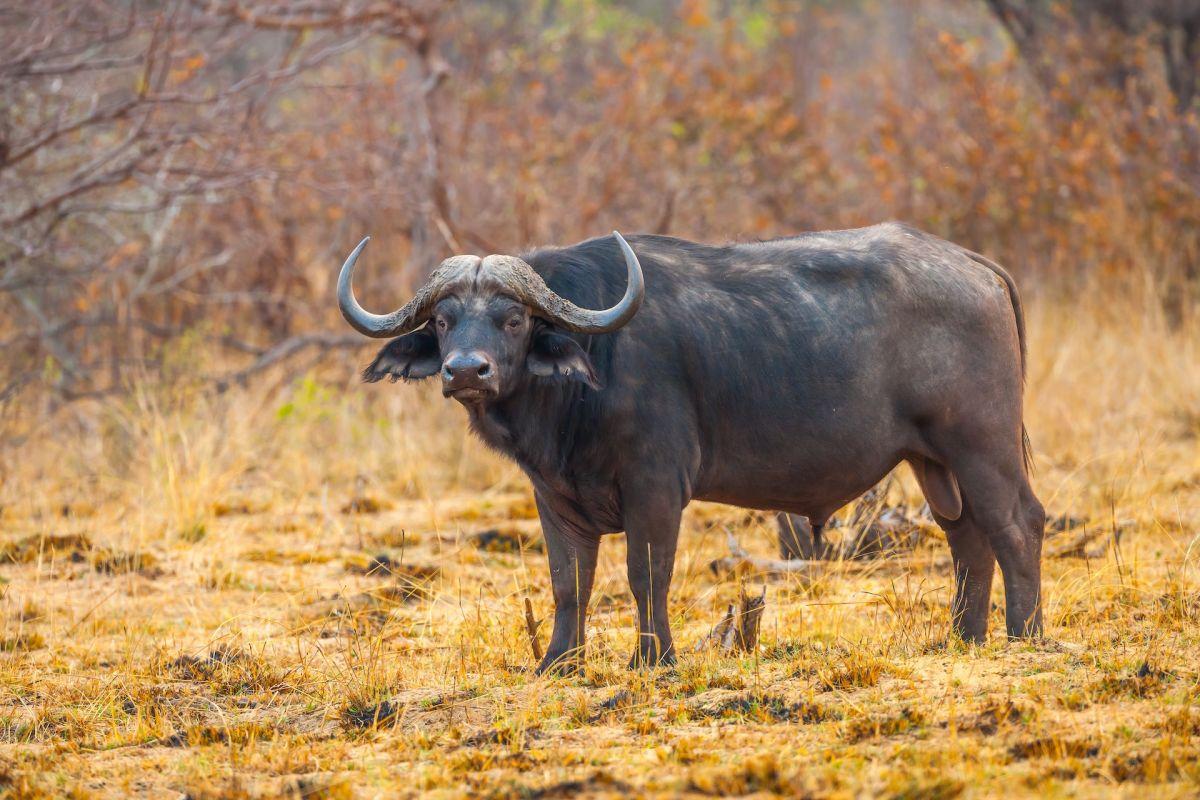
- Name: African buffalo
- Scientific name: Syncerus caffer caffer
- Conservation status:
The African buffalo is a large species of wild bovine native to sub-Saharan Africa. It has characteristic horns that form a continuous bone shield across the top of its head, and it is widely known as one of the most dangerous animals in all of Africa, because of its aggressive and unpredictable behavior: it reportedly gores, tramples, and kills more than 200 people each year!
Because of this, it has never been domesticated, and despite its look, it is not an ancestor of domestic cattle and is only distantly related to other bovines.
10. Bontebok
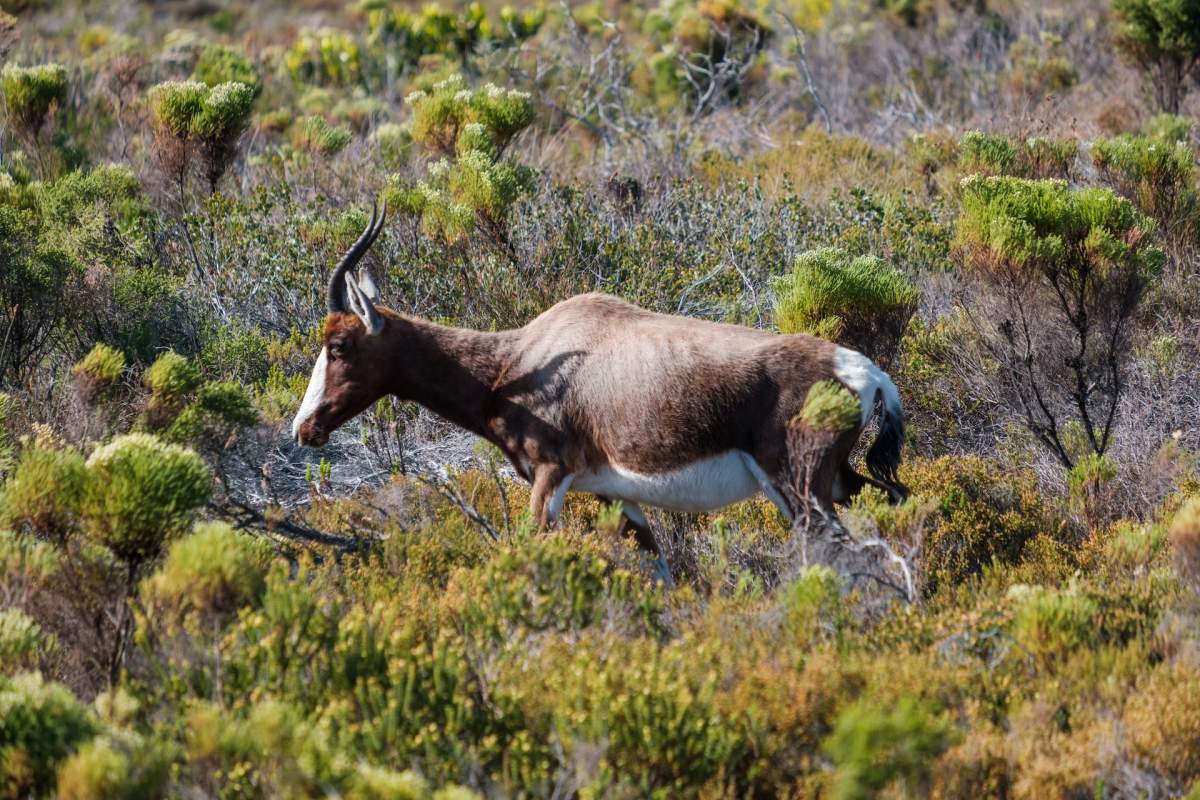
- Name: Bontebok
- Scientific name: Damaliscus pygargus
- Conservation status:
The bontebok is a medium-sized species of antelope native to Lesotho, South Africa, and Namibia. It mostly feeds on short grasses and is active during the day. However, when the temperature is too high, it also spends its day resting.
This antelope lives in herds of up to 40 individuals, and they are either all-male, all-female, or mixed. During the mating season, males do not hesitate to fight others to mark their territory or win a female.
—
So there you have them, these were my 10 wild animals in Lesotho. I hope you enjoyed this list and that you learned something new today.
In case you want to learn more about Lesotho wildlife, feel free to keep reading, as I still have lots of things to tell you about:
Endangered Animals of Lesotho
This is definitely the saddest part of the list, but it is essential to raise awareness. Because of this, let’s go through the list of endangered animals in Lesotho.
Here are the animals in danger of extinction in Lesotho.
- None
- White-backed vulture
- Rüppell’s vulture
- Secretarybird
- Egyptian vulture
- Black harrier
- Weza forest tree frog
- Gray crowned crane
- and 5 more…
To see the full list of endangered species in Lesotho, head over to the International Union for Conservation of Nature’s Red List.
What is the National Animal of Lesotho?
The national animal of Lesotho is the black rhinoceros.
The black rhinoceros, also known as the hook-lipped rhinoceros, is a critically endangered species of rhinoceros native to eastern and southern Africa. Three of its subspecies have already been declared extinct, including the western black rhinoceros.
This large mammal is an important symbol of Africa and is on the brink of extinction because of poaching, competing species, and habitat changes.
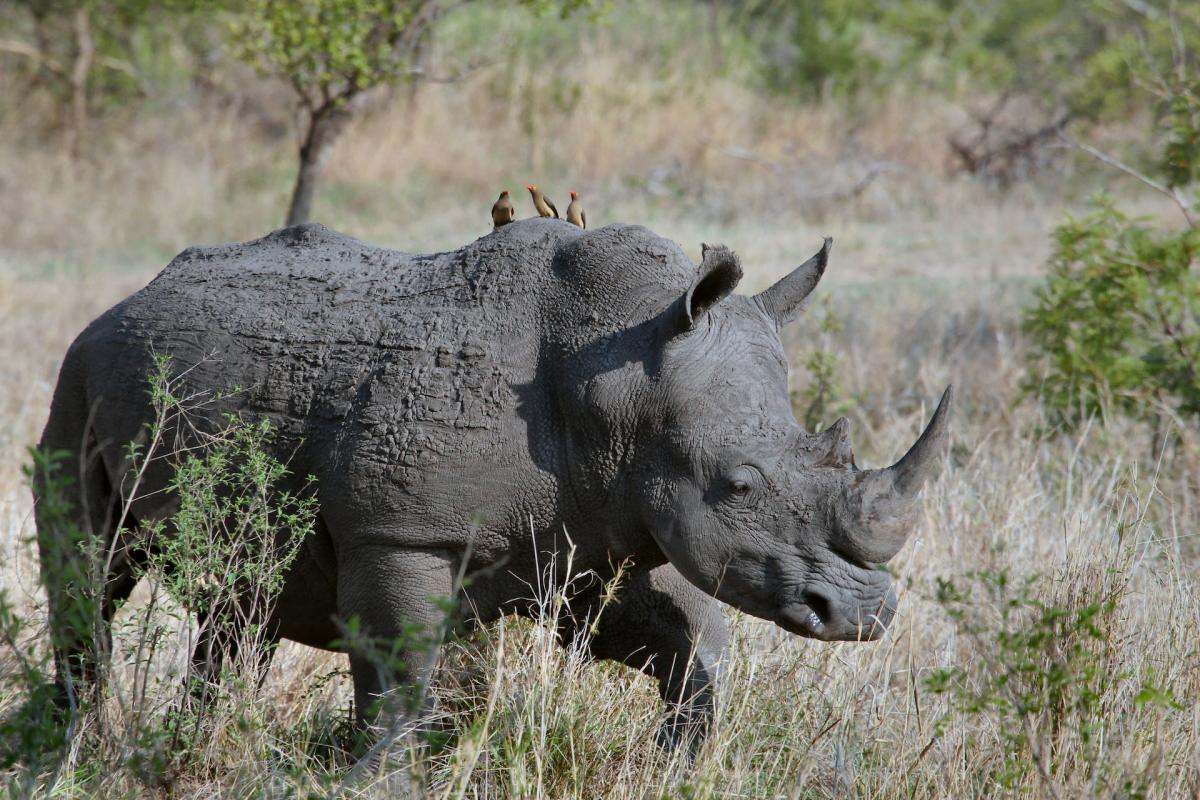
How Many Animals Native to Lesotho?
What is the diversity of native animals in Lesotho?
Let’s look at the total number of species of Chordata (mammals, birds, fishes, and reptiles).
Total number of animal species in Lesotho: 488 (14,205 in total in Sub-Saharan Africa)
More About Animals in the World!
Loved these Lesotho animal facts? Want to see what animals live in other countries?
Then check out these posts:
Or click here to see ALL the facts up on the blog! Spoiler alert: there’s A LOT of them.
Share the knowledge! Click on the buttons below to share information about these famous animals in Lesotho with your friends, and help them learn more about the world 🙂
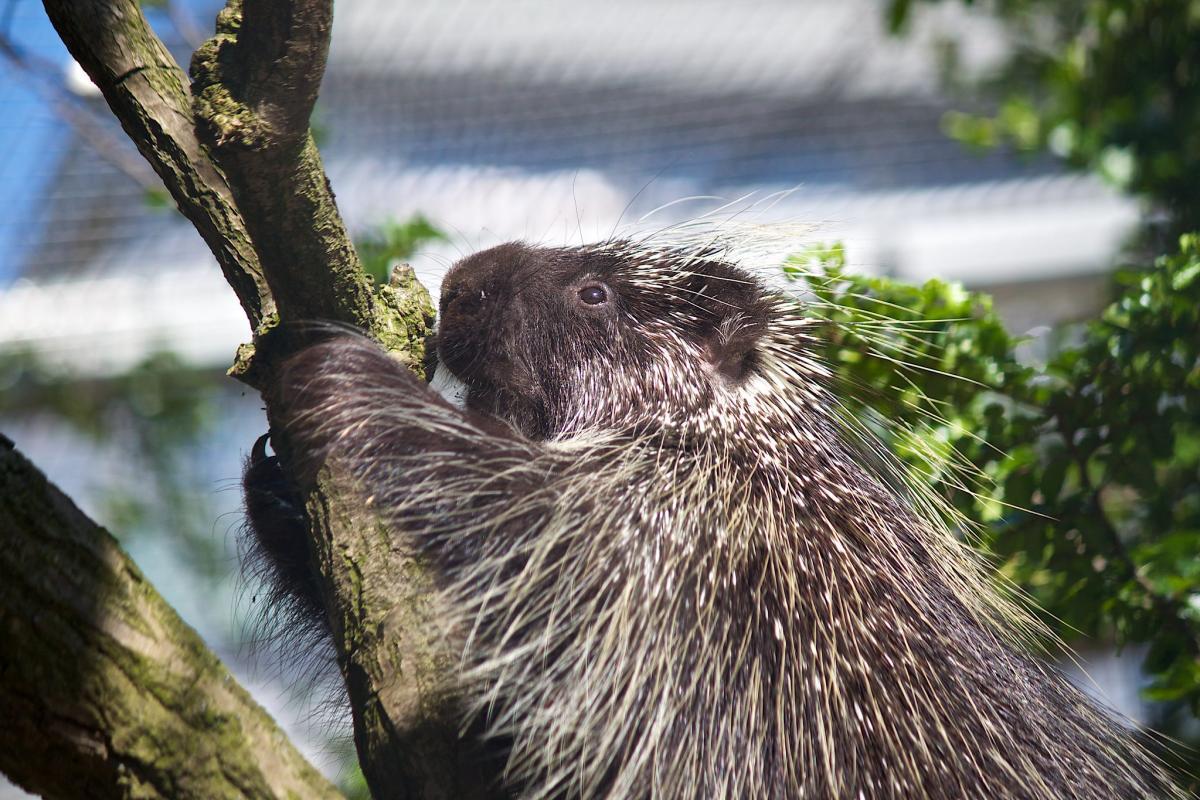

![10 Wild Animals in Liberia [Wildlife in Liberia]](https://www.kevmrc.com/wp-content/uploads/2022/12/10-wild-animals-in-liberia.jpg)
![50 Wild Animals in Brazil [Wildlife in Brazil]](https://www.kevmrc.com/wp-content/uploads/2022/06/50-wild-animals-in-brazil.jpg)
![30 Wild Animals in Saudi Arabia [Wildlife in Saudi Arabia]](https://www.kevmrc.com/wp-content/uploads/2022/08/30-wild-animals-in-saudi-arabia.jpg)